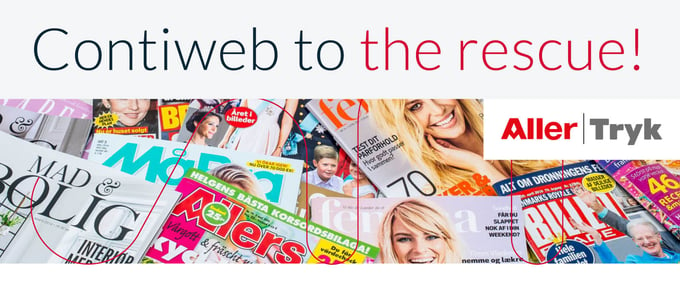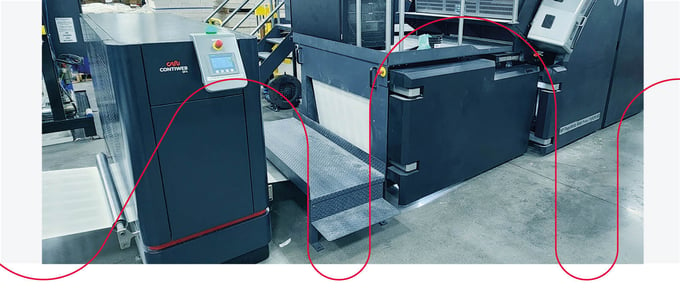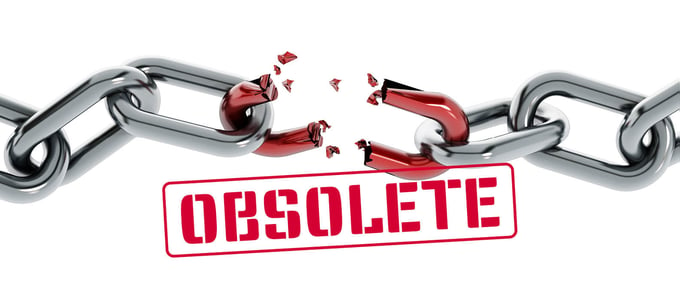Offset Quality with Inkjet
In the rapidly growing world of inkjet printing the holy grail is to deliver the same quality as offset litho, using the same papers as offset litho. Sounds a simple aim, but as is often the case it sounds simpler than it actually is in practice. Litho printing has been around for many years and papermakers have developed coatings and paper finishes that work wonderfully with offset litho, where the paper surface accepts the oil-based ink while repelling water from the dampening system. When the process is changed to inkjet, and particularly water-based inkjet, the water repelling coating gives some strange results with generally unacceptable print quality through effects of uncontrolled dot spread and coalescence giving fuzzy text and strange, varying colour images.
Inkjet has proven to be very successful and is now important across many print-for-profit applications. In display and signage on a range of substrates, with solvent and UV inks in the main, in books and mailings on mostly uncoated papers. Increasingly commercial print, packaging and labels are exploring the potential of inkjet, much with water-based inks. To succeed in new applications inkjet has to be better than the established printing methods. Inkjet allows customisation, when economics and turnround times are suitable it may be used, provided the print quality is suitable for the customer.
The high performance inkjet equipment providers have developed new inks to work with standard papers and HP (BlueCrest), Kodak, Canon (Océ), Ricoh/Screen and Xerox, all promise excellent results with “Standard Offset” papers. In some cases the results are very good, but not with every paper grade and certainly not when non-absorbent substrates are used. Using primers will open the use of foils and filmic materials in labels and flexible packaging with water-based inks. However, to take advantage of these benefits investing in the latest inkjet press may be necessary and with the shadow of COVID-19 clouding every business decision it is a brave company that will buy expensive new presses in the immediate future. A lower-cost alternative is to continue using their installed inkjet press technology and improve the achievable quality by optimising the paper surface prior to printing. For many companies this will be the most cost effective, and lower risk, decision. Even for the new generation of ink technology some substrates may also be improved through the application of a primer, avoiding the requirement of a higher-cost specialist paper or compromising on quality.
Applying a primer can improve adhesion while significantly improving printability. Another way of boosting quality is to apply a coating, of course, which can also provide increased protection, opening up applications such as postcard mailers requiring greater durability.
Contiweb's new Variable Coater
Contiweb has launched a new coater that is aimed at widening the reach of inkjet, making high quality cost effective. The Variable Coater (VC) can be used in- and off-line with a webfed press, to coat primer onto the base paper or to apply protective overvarnish on one, or both sides, of the web after printing.
One of the fascinating things about printing technology [well, it is fascinating to me] is how companies develop a range of methods to accomplish the same outcome, with different designs simplifying, reducing the cost and making the equipment more versatile. The Contiweb VC is designed to maximise the range of paper sizes it can coat while easily varying the application weight, while facilitating fast fluid change between different materials, e.g. matt or gloss coatings, or to use a primer.
Of course, many existing priming and coating systems can do this, most using flexo technology with a range of sleeves and aniloxes to vary coating width and coating weight as required. The Contiweb solution does not need any roller or sleeve changes to accomplish this. The principle is a simple 3-roller flood coating system, where the web travels vertically between the front and back rollers which flood coat. On each station there is a slowly rotating metering roller picking up the coating from the reservoir, transferring it onto a smooth stainless steel ductor roller and then to the rubber coated transfer roller. As all nips and roller speeds are independently adjustable the volume of coating transferred is controllable. For different web widths the elegant solution is to move the whole front and back applicators laterally, so that the overlap of the rollers is varied. The relative cassette positions are set by web width detection, meaning there is fully automatic web width variability. This also means that the web edge is not under the impression pressure, so there are no effects of “Blanket memory” when the web width changes.
Contiweb has applied for patent protection in this variable web width adjustment system for the metering roller technology, its an apparently simple idea that I should have thought of. But I didn’t. The coater will work with any primer and fluid, Contiweb is an engineering company and equipment manufacturer, not a consumable supplier so the printer can choose whichever coating works and is most economic.
Enthusiasm about the results
The official launch of the coater is October this year but several inkjet print companies have been testing Beta machines. In Germany Paragon is one, and Bernd Wein, Director of DM Operations, is enthusiastic about the results they have achieved on a range of papers from 60-250gsm. “Flexibility is one of the main objectives, with different fluids according to the profile of papers, and we can coat classic offset stocks for our high-quality applications rather than having to buy expensive mill treated stocks. It is a really good solution to run both in-line and off-line, and we are looking forward to more post-coating.”
Agility and quick response will be increasingly important for print suppliers in the aftermath of the current pandemic. Quality and cost will remain important and the ability to use existing equipment more effectively will help many print providers develop profitable business streams in an uncertain world. Using a Contiweb VC coater could help some of the thousands of companies using high-speed inkjet presses to improve the print quality and durability of their production, opening new applications to inkjet which is going to be critical in the changed print market when the “Day After” dawns. And printing companies would be wise to look for help.




